Samuel Chapman Armstrong of the Hampton Institute writes to Richard Henry Pratt discussing school management elements including the "bodily welfare" of Indians.
Hampton Normal and Agricultural Institute
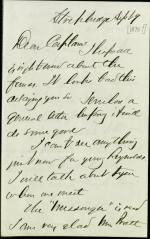
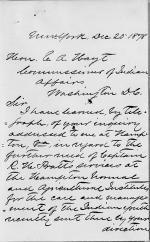
Hampton Institute Principal Samuel Chapman Armstrong responds to Commissioner of Indian Affairs E. A. Hayt's inquiry regarding the need for Captain Richard Henry Pratt to stay at Hampton to help care for and manage the Indian students. Armstrong states that it would be best for the Indians and Hampton for Pratt to remain at the school.
…
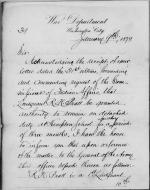
Secretary of War George W. McCrary forwards and endorses a letter from the General of the Army in response to a request to grant Richard Henry Pratt the authority to remain at the Hampton Institute for three months. The note states that Pratt is supposed to be a cavalry officer in Texas, where he is needed, but has been absent for four or five…
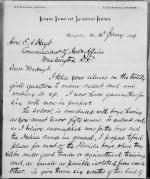
Richard H. Pratt states that he currently has 57 male students at Hampton and is looking to recruit 20 female students. He goes on to say that he plans to send most of the former Ft. Marion prisoners currently enrolled at Hamtpon on outings, believing that placing Indian students in white families where they will learn a trade will help give…
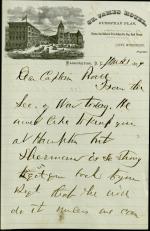
Samuel Chapman Armstrong of the Hampton Institute writes to Richard Henry Pratt informing him that the Secretary of War wishes to keep Pratt at Hampton, while General Sherman wishes to have him transferred back to regular army service. Armstrong discusses the possibility of the Army Bill being used to create an office of Indian education in the…
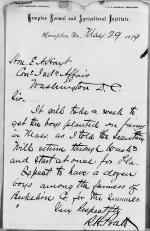
Richard H. Pratt informs Commissioner of Indian Affairs E. A. Hayt that it will take a week to place the male students from Hampton on farms in Massachusetts and then he will travel to Florida. Pratt expects to place a dozen male students on farms in Berkshire County as well.
Note: This item was copied from U.S. National Archives…
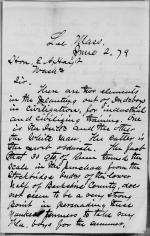
Richard H. Pratt informs Commissioner of Indian Affairs E. A. Hayt that there are problems "persuading these Yankee farmers" in Massachusetts to be outing hosts for Hampton students. While seven farmers are interested in hosting a student, Pratt would like fifteen more.
Note: This item was copied from U.S. National Archives microfilm…
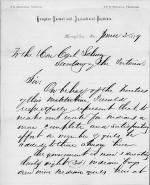
Hampton Institute Principal Samuel C. Armstrong states that they are currently educating 38 Indian boys and only 9 Indian girls, so he requests that they recruit 20 Dakota female Indian students. He requests that, if his wish is granted, Captain Richard H. Pratt be sent to secure the students and that he be allowed to bring back no more than…
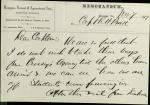
Samuel Chapman Armstrong of the Hampton Institute writes Richard Henry Pratt a memo stating that he cannot take some of the male students Pratt is recruiting at the moment due to capacity concerns.
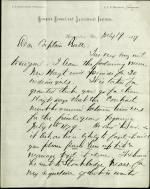
Samuel Chapman Armstrong of the Hampton Institute writes to Richard Henry Pratt informing him that Commissioner of Indian Affairs Hayt has promised a contract to recruit 20 Indian girls for the Hampton Institute. Armstrong discusses a desire to push Hayt for a larger contract for a higher recruitment number, and discusses logistics for Pratt's…
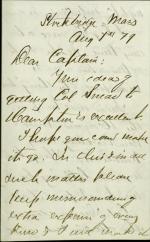
Samuel Chapman Armstrong of the Hampton Institute writes to Richard Henry Pratt discussing numerous topics include the per-capita rate for Indian students, a potential visit by Col. Snead, a competitive funding issue between Hampton and Howard University, and student progress.
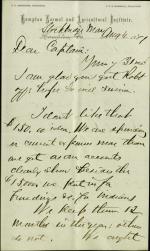
Samuel Chapman Armstrong of the Hampton Institute writes to Richard Henry Pratt discussing concerns over a proposal for too low of a per capita rate for Indian students.
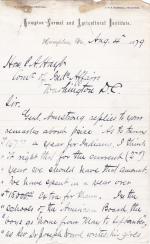
Letter from Richard Henry Pratt to Commissioner of Indian Affairs Ezra A. Hayt suggesting an increase in the per-student funding afforded by the government to Indian schools. Pratt also encourages the Commissioner to continue pursuing Congressional approval for the opening of an Indian school at the Carlisle Barracks.
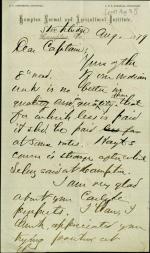
Samuel Chapman Armstrong of the Hampton Institute writes to Richard Henry Pratt about Pratt's attempts to establish a school at Carlisle. Armstrong notes that Commissioner of Indian Affairs Hayt seems less inclined to support their work. Armstrong also notes that he is glad to hear of Pratt's prospects with Carlisle, that he recognizes the "…
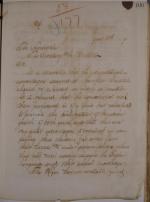
A letter wherein Commissioner of Indian Affairs Ezra A. Hayt writes to Secretary of the Interior Carl Schurz to recommend expanding the kind of educational program pursued at Hampton for "the civilization of Indian youth of both sexes… far away from their homes". Hayt requests that the Secretary of War approve the use of Carlisle Barracks in…
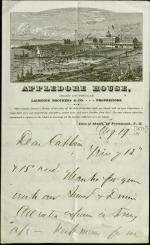
Samuel Chapman Armstrong of the Hampton Institute writes to Richard Henry Pratt discussing public sentiments towards Indian education, arguing that Pratt's upcoming school at Carlisle will help shift public views.
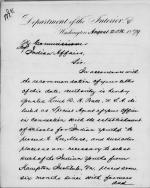
Acting Secretary of the Interior A. Bell informs the Commissioner of Indian Affairs that he is giving permission to Lieutenant Richard Henry Pratt to proceed to Lee, Massachusetts. Bell notes that Pratt will secure current Hampton Institute students who are on outing and take them to the Carlisle Barracks. These Hampton students will become…
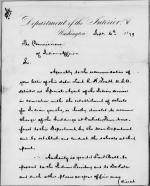
Acting Secretary of the Interior A. Bell informs the Commissioner of Indian Affairs that the War Department has transferred the buildings at the Carlisle Barracks to the Interior Department and that Special Agent Richard Henry Pratt is authorized to create an Indian school at the Barracks using the buildings. He also grants authority for Pratt…
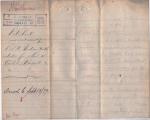
Letter from Richard Henry Pratt to Acting Commissioner of Indian Affairs Edwin J. Brooks regarding sick students discharged from the Hampton Institute. Pratt insists that too many boys were sent home, against his and the doctor's advice, and asserts that Spotted Tail and Red Cloud will be less interested in sending students to Carlisle as a…
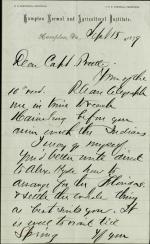
Samuel Chapman Armstrong of the Hampton Institute writes to Richard Henry Pratt discussing arrangements for Indians coming to either Hampton or Carlisle, as well as arrangements to transfer the Florida prisoners north. He also notes that Pratt can turn to the American Missionary Association for funding.
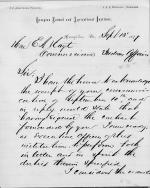
Hampton Institute Principal Samuel C. Armstrong informs Commissioner of Indian Affairs E. A. Hayt that he has signed his contract. He states that he's unhappy with the terms of the contract and describes the expense and difficulty of educating Indian students.
Note: This item was copied from U.S. National Archives microfilm reels (M234…
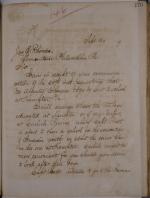
Commissioner of Indian Affairs Ezra A. Hayt's reply to a James E. Rhoades, a man who requested that two Shawnee boys who he is looking after "be sent to school at Hampton, Va." Hayt lets Rhoades know that he can arrange to have the boys be educated at Hampton Institute or Carlisle Indian School. Hayt describes Pratt's plan to go to Indian…
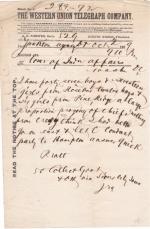
Telegram from Richard Henry Pratt, at the Yankton Agency, to the Commissioner of Indian Affairs informing him that 47 boys and 17 girls from Rosebud as well as 12 boys and 6 girls from Pine Ridge have been recruited. Pratt notes that he will proceed on to Carlisle. The note suggests that Pratt was due to rendezvous with "C" (probably agent…
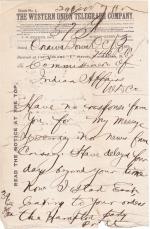
Telegram from Richard Henry Pratt in Onawa, Iowa, to the Commissioner of Indian Affairs following up on a previous message regarding his orders to recruit a party of students for the Hampton Institute. Pratt notifies the Commissioner that he has started his return journey.
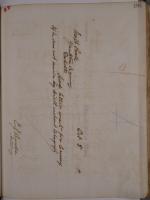
Telegram to Richard Henry Pratt from Commissioner of Indian Affairs E. J. Brooks while Pratt is out recruiting students to attend the Carlisle Indian School that reads, "had better wait for [Charles] Crissey. If he does not arrive by fifth without telegraph". Charles Crissey was the Indian Agent who was recruiting students for the Hampton…
